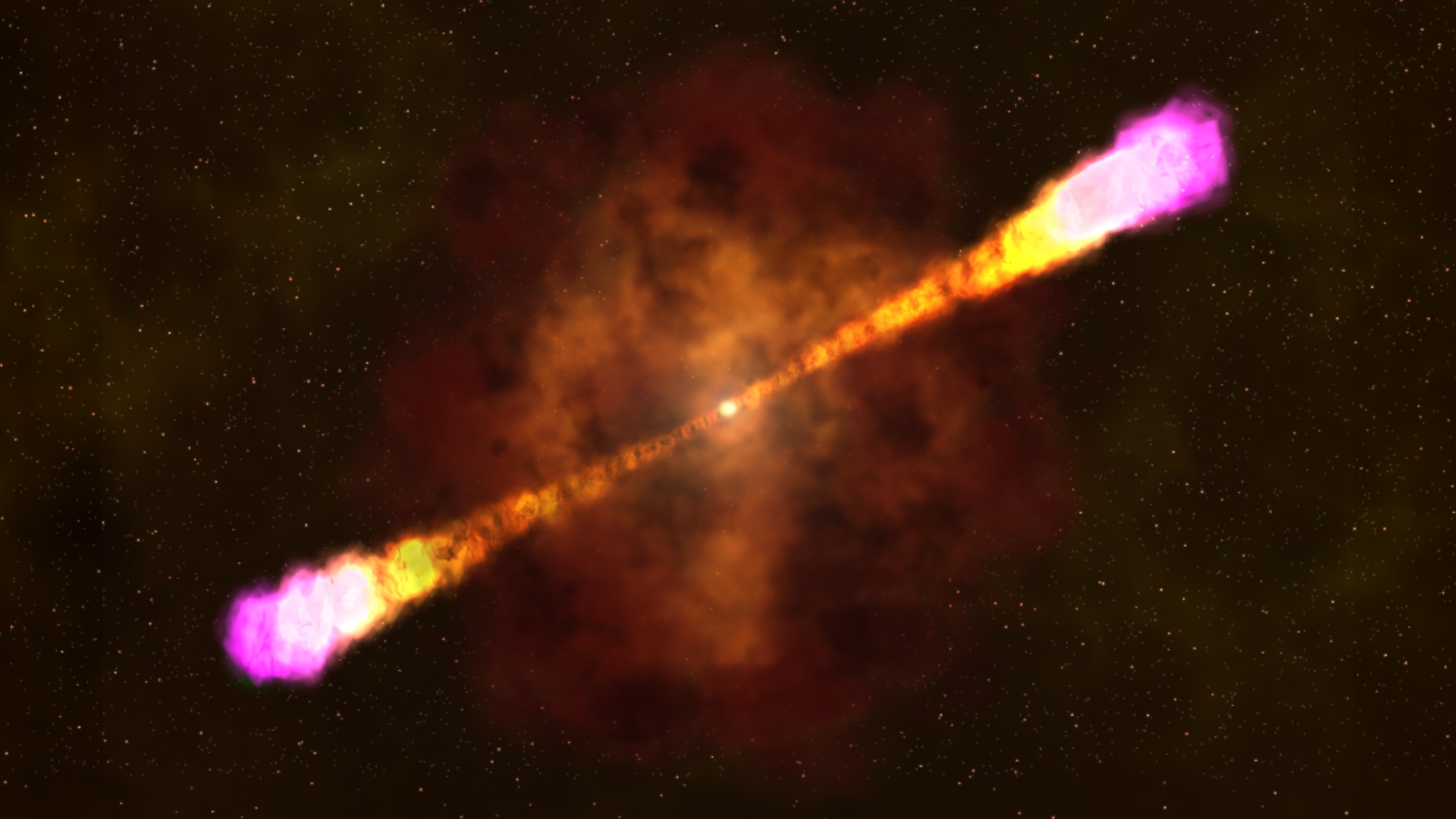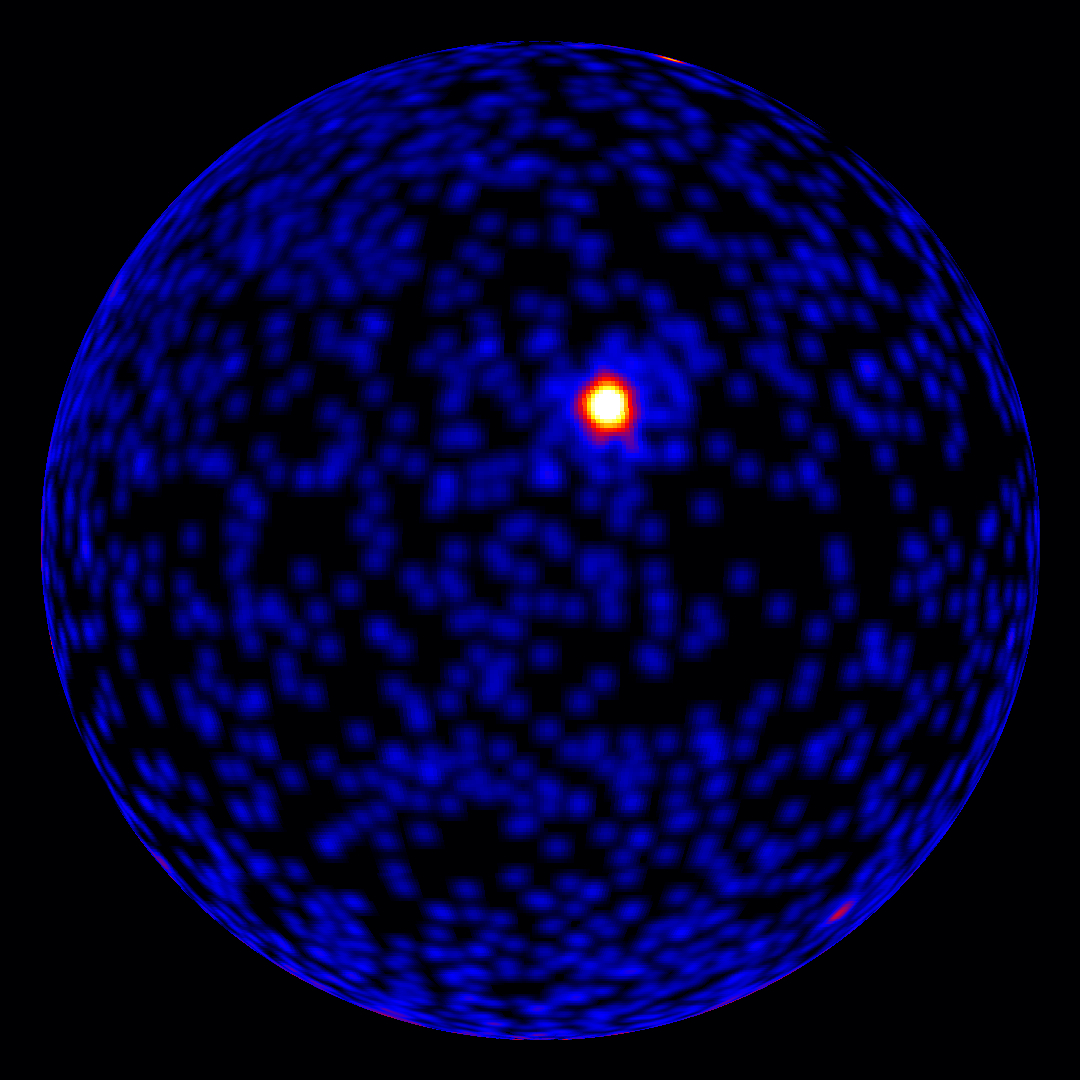Glimpsing the Infrastructure of a Gamma-ray Burst Jet
A new study using observations from the Liverpool Telescope in the Canary Islands provides the best look to date at magnetic fields at the heart of gamma-ray bursts, the most energetic explosions in the universe. An international team of astronomers from Britain, Slovenia and Italy has glimpsed the infrastructure of a burst's high-speed jet.
Gamma-ray bursts are the most luminous explosions in the cosmos. Most are thought to be triggered when the core of a massive star runs out of nuclear fuel, collapses under its own weight, and forms a black hole. The black hole then drives jets of particles that drill all the way through the collapsing star and erupt into space at nearly the speed of light.
Theoretical models of gamma-ray bursts predict that light from part of the jet should show strong and stable polarized emissions if the jet possesses a structured magnetic field originating from the environment around the newly-formed black hole, thought to be the "central engine" driving the burst.
Previous observations of optical afterglows detected polarizations of about 10 percent, but they provided no information about how this value changed with time. As a result, they could not be used to test competing jet models.
The Liverpool Telescope's rapid targeting enabled the team to catch the explosion just four minutes after the initial outburst. Over the following 10 minutes, RINGO2 collected 5,600 photographs of the burst afterglow while the properties of the magnetic field were still encoded in its captured light.
The observations show that the initial afterglow light was polarized by 28 percent, the highest value ever recorded for a burst, and slowly declined to 16 percent, while the angle of the polarized light remained the same. This supports the presence of a large-scale organized magnetic field linked to the black hole, rather than a tangled magnetic field produced by instabilities within the jet itself.

Measurements of polarized light in the afterglow of GRB 120308A by the Liverpool Telescope and its RINGO2 instrument indicate the presence of a large-scale stable magnetic field linked with a young black hole, as shown in this illustration.
Credit: NASA's Goddard Space Flight Center/S. Wiessinger

Measurements of polarized light in the afterglow of GRB 120308A by the Liverpool Telescope and its RINGO2 instrument indicate the presence of a large-scale stable magnetic field linked with a young black hole, as shown in this illustration. No labels.
Credit: NASA's Goddard Space Flight Center/S. Wiessinger

The 2-meter Liverpool Telescope, located at Roque de los Muchachos Observatory on La Palma in the Canary Islands, is the world's largest fully autonomous robotic optical telescope.
Credit: Copyright 2005 by R. Smith, used with permission

Theoretical models link the presence of strong and stable polarized light in a gamma-ray burst’s jet with a large-scale magnetic field (a blue spiral, in this illustration) originating from the newly-formed black hole.
Credit: NASA's Goddard Space Flight Center/S. Wiessinger
For More Information
Credits
Please give credit for this item to:
NASA's Goddard Space Flight Center
-
Animator
- Scott Wiessinger (USRA)
-
Producer
- Scott Wiessinger (USRA)
-
Writer
- Francis Reddy (Syneren Technologies)
Release date
This page was originally published on Wednesday, December 4, 2013.
This page was last updated on Wednesday, May 3, 2023 at 1:51 PM EDT.

